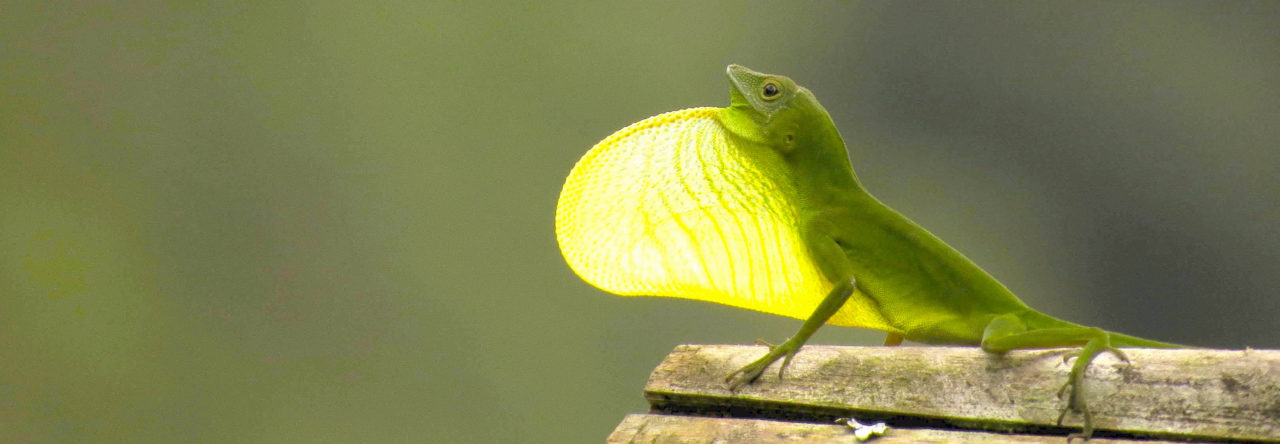
Figure from Leal and Powell paper showing that members of the same ecomorph category are not convergent in brain structure.
The Caribbean anole radiation is famous for its convergence. First detected in features related to habitat use and locomotion, such as limb length and toepad size, we now know that the Greater Antillean ecomorphs are convergent in many other attributes such as sexual dimorphism, territory structure and head shape. One might wonder what other features are convergent as well. For example, brains. The anole ecomorphs differ in the complexity of the environments in which they live, which might lead to selection for different brain configurations in different habitats. Brian Powell set out to examine anole brains for his just completed doctoral dissertation at Duke University, and he has now published the results. The short story: the anole ecomorphs are not convergent in brain structure! You can read more details in Chipojolab’s first-hand account of this paper, or check out the paper’s abstract here: Patterns of brain evolution have been widely studied across vertebrates, with the bulk of studies using mammals and/or birds as model systems. Within these groups, species occupying different habitats have been shown to have divergent neuroanatomy, particularly with regard to differences in the relative size of different brain structures, correlated with differences in habitat complexity. We examined the pattern of allometric scaling across the telencephalon, dorsal cortex, dorsomedial cortex, medial cortex, dorsal ventricular ridge, medulla and cerebellum in six species of Puerto Rican Anolis lizards, which are grouped in three distinct ecomorphs (i.e. ecological types) according to interspecific differences in preferred habitat type. The differences in habitat preferences are accompanied by morphological and behavioral adaptations for effective use of each habitat type. Our results challenge this trend and demonstrate a lack of convergence in the relative size of different brain structures between species belonging to the same ecomorph type. Overall brain volume explained between 92.5 and 99.8% of the variance in the volume of each of the brain regions measured and 93.8 and 98.5% of the variance in the volume of each component measured within the telencephalon. This pattern of brain allometry is consistent with concerted brain evolution. However, in the case of the cerebellum, interspecific differences in volume exhibit a trend in accordance with mosaic brain evolution. This suggests that both concerted and mosaic brain evolution have shaped the anole brain, with the former playing a dominant role. Concerted brain evolution is the primary mechanism shaping the brain in mammals and cartilaginous fishes, and its presence in Anolis lizards provides additional evidence supporting the hypothesis that concerted brain evolution might result from a conserved pattern of brain development common to all vertebrates. More generally, our findings highlight the necessity of further studies of brain evolution in reptiles as they can provide valuable insights into the mechanisms underlying vertebrate brain evolution.
Brian J. Powell and Manuel Leal (2012). Brain Evolution across the Puerto Rican Anole Radiation Brain, Behavior and Evolution DOI: 10.1159/000341161
- Evolution in Real Time on Lizard Island - March 23, 2025
- Spider Snags Adult Anolis osa - March 22, 2025
- An Homage to the Green Anoles of New Orleans - March 21, 2025


Leave a Reply